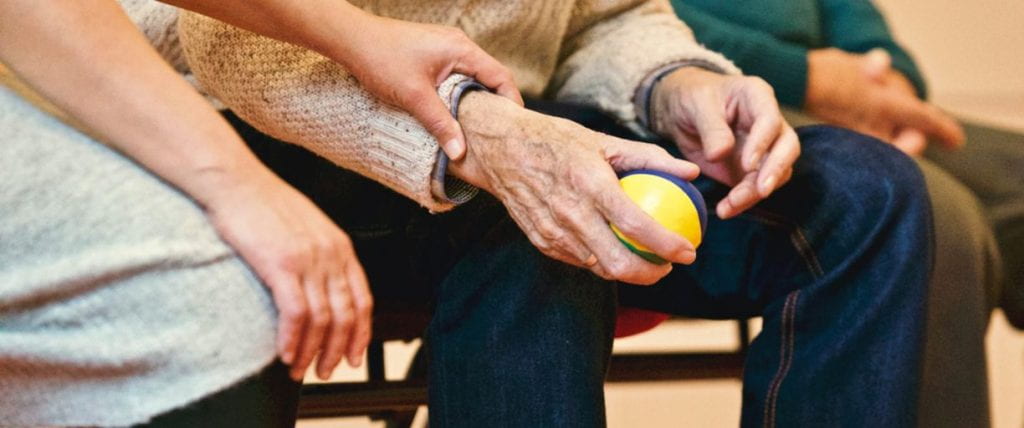Washington University Colorectal Surgeons answer patient questions regarding hemorrhoids.

Hemorrhoids are a normal part of the anatomy located within the anus. Everyone has them. They are considered vascular cushions between the arterial and venous blood supply to the distal rectum and anal canal. Normally, they function to fine tune fecal incontinence. When functioning normally hemorrhoids do not cause symptoms.
We do not fully understand how hemorrhoids become symptomatic, but changes in dietary patterns, behavioral factors, excessive straining and sphincter dysfunction are some of the associated factors. It is believed that hemorrhoids lose their suspensory ligaments as a result of long term straining or aging. This allows them to prolapse, enlarge and ultimately bleed. The management of hemorrhoids is focused on treating the symptoms associated with hemorrhoids and not necessarily the presence of hemorrhoids.
Hemorrhoids are normal and everyone has them. Typically, when someone develops symptoms, this is what is referred to as hemorrhoids. There are internal and external hemorrhoids. Internal hemorrhoids are located inside the anal canal. External hemorrhoids are located just outside of the anus.
Internal and external hemorrhoids have different symptoms.
Symptoms associated with internal hemorrhoids are bleeding and prolapse or “pop out.” The prolapsing of hemorrhoids can lead to seepage or leakage, itching, burning and discomfort.
Symptoms associated with external hemorrhoids include a painful lump with or without bleeding (called thrombosis), swelling and difficulty cleaning the area.
Treatment for hemorrhoids improves or eliminates the symptoms, but does not to “get rid” of the hemorrhoids. The type and severity of the symptoms dictates the therapy. The two main symptoms for internal hemorrhoids are bleeding and prolapse. Based on these symptoms, hemorrhoids are given a grade:
- Grade 1 hemorrhoids bleed but do not prolapse.
- Grade 2 hemorrhoids bleed and prolapse, but reduce on their own.
- Grade 3 hemorrhoids bleed and prolapse, but require manual reduction.
- Grade 4 hemorrhoids bleed and prolapse, but are unable to be reduced.
A high fiber diet is typically the first line of therapy for all hemorrhoids. The ideal intake of daily fiber is 25 grams, along with six to eight 8oz glasses of water. A high fiber diet combined with improved
bathroom habits such as no pushing and straining and spending no more than 5 minutes on the toilet is very effective in dealing with grade 1 and 2 hemorrhoids.
When symptoms persist despite maximal fiber therapy, there are some painless, office-based options available. These options include rubber band ligation and infrared coagulation. During rubber band ligation, a rubber band is placed on the enlarged hemorrhoid to decrease its volume and scar or fix it in place to prevent prolapse. This may require several treatments.
For hemorrhoids that have not improved with dietary measures and/or rubber band ligation, excisional hemorrhoidectomy is indicated. This requires a trip to the operating room, where the patient is sedated. The internal and external components of the largest hemorrhoid are removed. The incision is then closed with suture. Depending on the extent of the hemorrhoidal disease, 1 to 3 columns of hemorrhoids may be excised. Ultimately, the severity of a patient’s symptoms dictates how aggressively symptomatic hemorrhoids are treated.
External and internal hemorrhoids are typically not visible until they become symptomatic. External hemorrhoids can enlarge over time due to “flares” resulting in excessive skin or skin tags around the anus. They may become thrombosed, which appears as a distinct, tender lump with a purplish color. Internal hemorrhoids are only visible if they prolapse. A prolapsed hemorrhoid appears as a pink or red bunch of tissue that protrudes through the anus. This can result in some discomfort or mucus drainage. It is safe and probably more comfortable to push the hemorrhoid back inside.
Hemorrhoids are a normal part of the anatomy of the anal canal. In that sense, they last forever and do not go away. Hemorrhoids become noticeable when they are symptomatic. For internal hemorrhoids, when the symptoms go away the hemorrhoids tend to “go away.” However, if symptoms persist despite a high fiber diet, the hemorrhoids may require excision for them to “go away.” Symptomatic external hemorrhoids are also not typically noticed unless they become symptomatic. For a thrombosed hemorrhoid, the pain typically resolves in 7-12 days, but the residual lump can often persist for up to 6 weeks. The body slowly absorbs the clot as the hemorrhoid resolves. The lump may be gone, but it is not uncommon to have a residual skin tag that persists due to the inflammation and trauma of the thrombosis.
When hemorrhoids are functioning normally, we typically do not notice or feel them. When internal hemorrhoids become symptomatic, we typically will feel some itching, pressure or seepage from the prolapse. These symptoms are related to the hemorrhoid protruding through the anal canal. Bleeding associated with hemorrhoids is painless, so you should not feel anything. Thrombosed external hemorrhoids can be extremely painful and have an associated lump. Once they resolve, you may notice them when you wipe or examine yourself, but you typically do not “feel” them.
Washington University Colorectal can provide options and treatments for hemorrhoids. Meet our specialists below.




